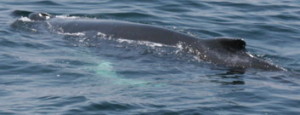Naturalist’s Notebook: August 30 – September 05
Found along with the Green Crabs in the minnow trap for this Saturday’s morning trip, were a pair of Sea Stars. Based on color alone, they were likely Forbes’ Common Sea Stars. However, that species is so similar to the Northern Sea Star that without a better key one could not be sure. Sea Stars belong to a group of invertebrates called Echinoderms. Their most immediately recognizable feature is their radial symmetry. Rather than having a right side and a left side, things with radial symmetry have a number of sides that look nearly identical. In the case of sea stars, there are five sides (or a multiple of five). Each side is nearly the same as each other side. Kind of like if you cut the top off of a green pepper. The seed chambers are nearly identical and layed out around a central core.
Sea Stars feature five limbs radiating out from a central core. On the under surface, the mouth is located in the center of the core and radiating out from it, along the underside of each arm, is a deep groove stuffed with rows of tube feet. On the upper surface, the anus is located at the center. There is a sieve plated (called the madreporite) located at the base of two adjoining limbs and the reproductive ducts lie at the joints where adjacent arms meet. The surface of the arms holds the spines and other features that define species. At the end of each arm is a red eyespot that detects the presence of light.
The tube feet on the underside are part of the water vascular system. They are thin, finger-like extensions that reach out when filled with water and contract by muscular action. In some species, each one has a suction cup on the end of it to allow the animal to hold quite tenaciously to its substrate. They are used in locomotion and gathering food. The tube feet are joined by a series of canals that run through the body and contain sea water. The madreporite allows the animal to take in or expel sea water as necessary.
Perhaps the most widely known feature of sea stars is called autotomy. When one of the limbs is damaged, it is shed from the body. Once gone, the wound heals and then a new arm is generated to replace the lost one. Usually the autotomized appendage dies. In some species, though, both the central core and the lost arm will regenerate all of the necessary body parts to be a complete star.
The reports from August 30 and 31, and September 01 all make note of the continued presence of large numbers of finback whales between Wood End and the Race Point Coast Guard Station. They also all speak of surface feeding humpback whales out near the triangle. Reports include the use of bubble clouds, bubble columns, and bubble nets. They also include the behavior called kick feeding where the animal lifts its tail above its bubbles and slaps the surface to create even more disturbance. And the occasional mention of a chin-kicker. These whales lift their heads above the water and slap their chins down before kicking with their tails. Echo is one such feeder. And, much is reported of lunges at the surface of the water allowing a look at the baleen of the whales’.
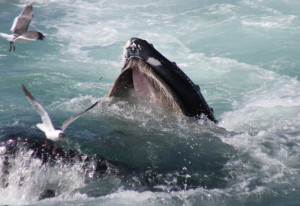
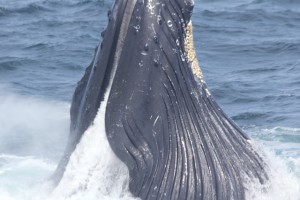
September 02 and 03 are reported very much the same as the previous three days with the addition of a couple of breaches and some flippering.
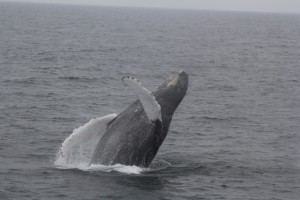
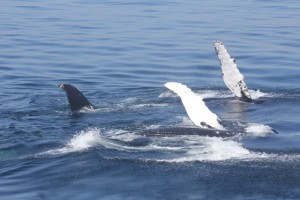
Also, Carolyn OConnor reports spotting a blue shark on the 3rd. She says that the shark swam at the surface for a number of minutes as the passengers watched, allowing her to take this photo.
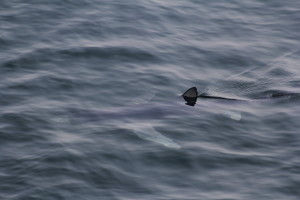
Though the sea picked up for the rest of the week, the activity remained. Finners and minkes were plentiful between Wood End and Peaked Hill. And feeding humpbacks were seen spread from the triangle to the southern edge of the Bank. And this all continued until the sunset trip on Saturday. The five oclock trip on September 5 saw more whales than any other trip that day. Finback whales and Minke whales and two dozen Humpback whales were sighted. And virually all of the humpbacks were logging. Not really shocking after a straight week of feeding that they should need to rest. All living things need rest. Whales too. The advantage of resting whales is that you get a really good look at what the animals actually look like. And it helped that the seas were coming down by that time so the looks were even better.
